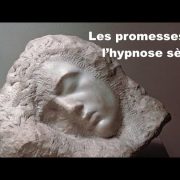Plutchik’s wheel is a resource devised by Robert Plutchik, an American psychologist, to graph different emotions and their possible combinations in a didactic way. This researcher believed that there were some basic emotions and that these evolved throughout life, transforming over time.
Emotions evolve and present modifications thanks to adaptation. In other words, human beings need to adjust their subjective world to external reality, and this interaction leads to transformations in the way they feel. Plutchik’s wheel, in a way, shows the path followed by emotions.
We’re talking about a graphic in the shape of a flower with eight petals in different colors. Each of them shows the evolutionary course followed by each of the basic emotions represented in those eight petals. Let’s see what this is about.
“The more open we are to our own feelings, the better we can read those of others.”
-Daniel Goleman-
Plutchik’s wheel hubs
Plutchik’s wheel is based on three axes or basic criteria. These are typology, antagonism, and intensity. Regarding the typology, Plutchik points out that there are two kinds of emotions: Basic emotions and compound ones. The first are those that are in a natural state, and the second would result from the combination of these.
As for antagonism, it refers to the opposition that exists between some emotions and others. On Plutchik’s wheel, such emotions appear at opposite ends so that such opposition becomes apparent. There are four axes of opposition: Joy/sadness; anticipation/surprise; disgust/trust; and fear/anger.
Finally, intensity refers to the strength of emotions. This is plotted on the Plutchik wheel as color intensity. The more intense an emotion is, the more it will resemble the basic emotion and the closer it will be to the center of the graph.
Plutchik’s wheel postulates
The foundation of his theory of emotions is derived from the postulates observed in this research, which include the following:
- The limbic system of a human being is similar to that of other mammals. Animals and humans experience the same basic emotions.
- Emotions arose as part of the evolutionary process long before apes or humans existed.
- The most influential role of emotions is to help us survive.
- These are the identifiable common patterns and elements that make up each emotion.
- The most basic emotions are the primary ones: Trust, fear, surprise, sadness, disgust, anger, anticipation, and joy.
- The sum of these various primary emotions will produce new ones, such as love = (joy + trust), guilt = (joy + fear), and delight = (joy + surprise).
- Emotions are constructs, or ideas, that help describe a certain experience.
- Like many things in nature, there’s a duality with emotions, so each has its opposite pole.
- The degree of similarity determines which emotions are more related and which are the opposite.
- Changes in intensity produce the diverse amount of emotions that we can feel, such as the following:
– Confidence ranges from acceptance to admiration.
– Fear ranges from shyness to terror.
– Surprise ranges from uncertainty to astonishment.
– Sadness ranges from pessimism to pain.
– Disgust ranges from dislike to abhorrence.
– Anger ranges from annoyance to fury.
– Anticipation ranges from interest to vigilance.
– Joy ranges from serenity to ecstasy.
Basic emotions
According to Plutchik’s thesis, which is found in various articles and research, basic emotions are the following: Joy, trust, fear, surprise, sadness, aversion, anger, and anticipation. Each of them is in the essence of the human being and corresponds to emotion in its pure state. Let’s see what Plutchik says regarding of each of those emotions:
1. Joy
Joy is defined as a state of satisfaction and well-being, both with oneself and with the circumstances in which one lives. It can be subtle, like serenity, or intense, like ecstasy. Sadness is its opposite. Joy is felt when a goal is reached or a good moment is enjoyed.
Joy can interact with other emotions, producing new sensations. For example, it can be combined with confidence and anticipation, to give rise to love and optimism, respectively. It can also couple with fear and anger, generating guilt and pride.
2. Trust
Trust is a subjective position in which one has the conviction that there will be no harm or damage in a certain situation or in the face of one’s own action. It’s linked to security, tranquility, and hope.
For Plutchik, this emotion can diminish and become acceptance or enlarge and transform into admiration. Usually, trust tends to merge with fear, giving way to submission. When this happens, the person loses their freedom in favor of someone else’s wishes and will.
3. Fear
Plutchik defines fear as an unpleasant uncertainty, which is born from expectations associated with damage or evil to come. It’s related to danger and threat. Its main function is, as stated in this article, to provoke adaptive responses.
This emotion is associated with others to create more complex emotions. For example, the integration of fear and sadness produces despair. According to Plutchik’s wheel, anger is the opposite of fear.
4. Surprise
Surprise is the reaction to what’s unpredictable in the environment. It’s classified as a neutral emotion and can alternate between distraction and wonder. Its opposite emotion is anticipation.
When connected with sadness, it gives rise to disappointment; when it’s connected with joy, it causes delight. At the same time, when it’s related to emotions like anger, it generates outrage.
5. Sadness
Sadness is a state of anxiety in which a depressed mood prevails and usually leads to the need for social support. It’s related to the loss, separation, or lack of something. Although it’s negative, it’s stated that its appearance usually produces empathy and facilitates group bonds.
Sadness often leads to reflection and introspection, which allows people to understand their values, feelings, and needs. When anger is added, it causes envy. On the other hand, its association with surprise provokes disapproval.
6. Disgust
Disgust is an emotion in which the will to reject or avoid something or someone is expressed. It can manifest as boredom or loathing, and its polar opposite is confidence.
The most common combination of dislike is with anger, which leads to contempt. There are less frequent mixtures, such as aversion with surprise and anticipation, which result in experiences of disgust and cynicism, respectively.
7. Anger
According to Plutchik, anger is the response to an offense, especially when it’s perceived to have been done deliberately. As indicated by an article in Frontiers in Psychology, “Anger entails a negative activation that leads the individual to resolve the tension through active behaviors.”
Anger is expressed in different ways, such as mild irritation or intense fury. It’s an emotion necessary for adaptation and survival. Through it, people can act in dangerous situations.
8. Anticipation
Anticipation is the objective expectation, based on experience and previous information, that one has about events or situations. It’s essential for survival, as it allows people to prepare for future events and avoid threats.
The relationship between anticipation and sadness is the most common. This combination leads to pessimism, which isn’t a good ally for health. This is indicated by a study that associates it with greater cardiovascular mortality.
Discover::
What are Emotions?
[/atomik-read-too ]

The combination of basic emotions
Plutchik’s wheel shows that the basic emotions combine with each other and give rise to three dyads or groups of combined emotions. In turn, these combinations generate new emotions. Let’s see:
Primary dyad combinations
- Joy + Trust = Love
- Joy + Anticipation = Optimism
- Trust + Fear = Submission
- Fear + Surprise = Alarm
- Surprise + Sadness = Disappointment
- Sadness + Disgust = Remorse
- Disgust + Anger = Contempt
- Anger + Anticipation = Aggression
Secondary dyad combinations
- Joy + Fear = Guilt
- Joy + Anger = Pride
- Trust + Surprise = Curiosity
- Confidence + Anticipation = Fatalism
- Fear + Sadness = Despair
- Surprise + Disgust = Disbelief
- Sadness + Anger = Envy
- Disgust + Anticipation = Cynicism
- Anger + Sadness = Envy
Tertiary dyad combinations
- Joy + Surprise = Delight
- Joy + Disgust = Morbidity
- Trust + Sadness = Sentimentality
- Trust + Anger = Domination
- Fear + Disgust = Shame
- Fear + Anticipation = Anxiety
- Surprise + Anger = Outrage
- Sadness + Anticipation = Pessimism
[/atomik-read-too ]
What’s the wheel of emotions for?
This wheel is used to get to know oneself. It allows us to understand what happens inside us and simplify what’s happening to us, increasing self-expression and self-pity. Therefore, using this classification of emotions helps us to do the following:
- Avoid negative thoughts: We can avoid negative thoughts by knowing how we react to different actions and what the emotions that are related to them are.
- Connect with others: The wheel of emotions makes it easy to communicate with others. This is so because we’re able to identify an emotion through words, and we can express, in this way, what we feel.
- Mature emotionally: It allows us to better manage emotions and, therefore, have more emotional intelligence. Through the wheel of emotions, we can learn to name, control, and express emotions.
- See emotions from another perspective: We can distance ourselves from our emotions and see the global panorama in which they’re being activated.
Finally, the value of Plutchik’s wheel lies in the very precise and didactic organization that it proposes as a common emotional dictionary. We’re talking about a tool that can help us better understand our emotions and those of others.
For this reason, we invite you to continue exploring this theory and analyze the various combinations that we’ve presented to you. Are emotional combinations familiar to you? Have you ever noticed that the integration of two emotions produces a more complex one? Think about your life and those emotions that surface in your daily life.
The post The 8 Basic Emotions According to Plutchik’s Wheel appeared first on Exploring your mind.



















Comments